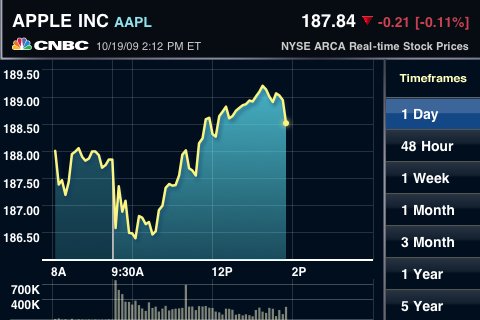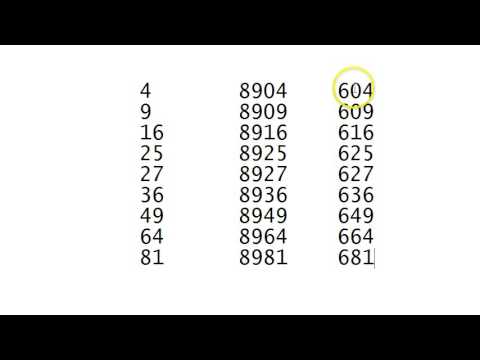Contents:


This article also highlights the definition of negative amortization. This can be beneficial for purposes such as deducting interest payments for tax purposes. Tangible assets are the one which are physical or can be touched like building, furniture, equipment, vehicles, etc. Electrical Machinery, X-ray and electrotherapeutic apparatus and accessories thereto, medical, diagnostic equipments, namely, Cat-scan, Ultrasound Machines, ECG Monitors, etc. For the purpose of this Schedule, the term depreciation includes amortisation.
How amortization is calculated?
Starting in month one, take the total amount of the loan and multiply it by the interest rate on the loan. Then for a loan with monthly repayments, divide the result by 12 to get your monthly interest. Subtract the interest from the total monthly payment, and the remaining amount is what goes toward principal.
This method is a mix of straight line and diminishing balance method. Thus, depreciation is charged on the reduced value of the fixed asset in the beginning of the year under this method. However, a fixed rate of depreciation is applied just as in case of straight line method.
What is amortization in simple terms?
Value of such fixed assets decreases with passage of time and its utilization i.e. wear and tear. Value of portion of fixed asset utilized for generating revenue must be recovered during a particular accounting year to ascertain true income. This portion of cost of fixed asset allocated to a particular accounting year is called depreciation.
What is an example of amortization of assets?
What Is an Example of Amortization? A company may amortize the cost of a patent over its useful life. Say the company owns the exclusive rights over a patent for 10 years, and the patent is not to renew at the end of the period.
If the payments aren’t enough to pay off the loan on the original schedule, this can be a problem. Just upload your form 16, claim your deductions and get your acknowledgment number online. You can efile income tax return on your income from salary, house property, capital gains, business & profession and income from other sources.
File ITR, invest & save upto ₹46,800 in taxes on the go
Intangible assets, unlike tangible ones, do not have any salvage or resale values at the end of their usable life. Amortization also deals with the change in the value of intangible investments related to capital investments. Intangible belongings are non-physical belongings that are nonetheless essential to a company, corresponding to patents, logos, and copyrights. The objective in amortizing an asset is to match the expense of acquiring it with the income it generates.
The residual value at the end of the five years is expected to be 10% of the original purchase price. Amortization offers small businesses the benefit of having a clear view of the payment amount no matter at which time that involves both interest and principal. If you’re aware of amortization, it will be beneficial in accounting as it’s among the top accounting terms.
Recent Terms
Generally, the method of depreciation to be used depends upon the patterns of expected benefits obtainable from a given asset. This means different methods would apply to different types of assets in a company. Thus, it means that depreciation rate is charged on the reducing balance of the asset.
- However, many assets have insignificant repairs and maintenance expenditures for which straight line method can be applied.
- Loans with shorter phrases have much less interest because they amortize over a shorter time period.
- EBITDA can be used by companies in budgeting, valuations, and financial modelling.
- Let’s say that a business has created a software application to use internally to help control its stock.
The useful lives of the assets for computing depreciation, if they are different from the life specified in the Schedule. 6.Higher depreciation and amortization charges also burdened the bottom-line. Part is different from the useful life of the remaining asset, useful life of that significant part shall be determined separately. Different from the useful life of the remaining asset, useful life of that significant part shall be determined separately.» ‘‘Continuous process plant’’means a plant which is required and designed to operate for twenty-four hours a day. Cost incurred by the company in accordance with the accounting standards.
The amortisation amount or rate should ensure that the whole of the cost of the intangible asset is amortised over the concession period. The underlying assumption of this method is that the particular asset generates equal utility during its lifetime. The expenditure incurred on repairs and maintenance will be low in earlier years, whereas the same will be high as the asset becomes old. Apart from this the asset may also have varying capacities over the years, indicating logic for unequal depreciation provision.
- It strips out the non-cash depreciation, amortization expense, taxes, and debt costs that are dependent on the capital structure.
- It also does not account for expenses related to debt and emphasizes more on the firm’s operating decisions.
- Furthermore, depreciation is a non – cash expense as it does not involve any outflow of cash.
- Also, under this method, the value of asset can never be completely extinguished, which happens in the earlier explained Straight Line Method.
- A portion of every payment is for curiosity while the remaining amount is applied in the direction of the principal balance.
Amortization can be calculated using most trendy financial calculators, spreadsheet software packages similar to Microsoft Excel, or online amortization charts. Loan amortization supplies debtors with a transparent and consistent picture of how a lot they are going to be repaying during every repayment cycle. Borrowers could have a set repayment schedule over the repayment period of the loan. Let’s say a company spends $50,000 to obtain a license, and the license in query will expire in 10 years. Since the license is an intangible asset, it must be amortized for the 10-year period main up to its expiration date. Amortization is a method of spreading the cost of an intangible asset over a specific period of time, which is often the course of its useful life.
Profit or Loss Before Tax
https://1investing.in/ can discuss with the method of paying off debt over time in common installments of interest and principal adequate to repay the mortgage in full by its maturity date. With mortgage and auto loan funds, the next share of the flat month-to-month cost goes toward interest early in the mortgage. Fixed assets like plant and machinery etc. are used in the business for the purpose of production of goods or for providing useful services in the course of production. These fixed assets are utilized during operations of a business for a number of successive accounting periods.
What is an example of amortization?
Amortizing a loan
You have a $5,000 loan outstanding. If you pay $1,000 of the principal every year, $1,000 of the loan has amortized each year. You should record $1,000 each year in your books as an amortization expense.
If we define amortization, it’s an accounting method that’s highly helpful to periodically lower the tangible asset over a fixed period of time or a loan’s book value. First, amortization is used to pay off debt through regular principal and interest payments over time. An amortization schedule is applied to reduce the current balance on the loan.
However, if the property values lower, it is doubtless that the borrower will owe more on the property than it’s worth, known colloquially within the mortgage business as “being underwater”. However, in reality, companies do not think about the service benefit patterns when selecting a depreciation method. In general, only a single method is applied to all of the company’s depreciable assets. An income statement is divided into income and expenses, followed by profit and loss calculations. For example, if a corporation has a lot of depreciable equipment , the cost of keeping and supporting these capital assets isn’t recognised.
SAMSARA INC. Management’s Discussion and Analysis of Financial Condition and Results of Operations (form 10-K) – Marketscreener.com
SAMSARA INC. Management’s Discussion and Analysis of Financial Condition and Results of Operations (form 10-K).
Posted: Tue, 21 Mar 2023 20:14:06 GMT [source]
This asset is the one reflected in the books of accounts at the beginning of an accounting period.So, the book value of the asset is written down so as to to reduce it to its residual value. Interest is not included in EBITDA because it is dependent on a company’s financing structure. Various companies have different capital structures, which leads to varying interest costs. As a result, adding back interest and ignoring the influence of capital structure on the business makes it easier to assess the relative performance of organisations. Amortization Definition – “A charge on the income statement reflecting a portion of the cost of an intangible asset such as a patent”. Amortisation is a practice that helps spread the cost of an intangible asset over a specific period, which is usually the course of its useful life.
The two amortization meaning in accounting with examples are important to calculate the tax liabilities and deductions over the asset’s life. Amortization is an accounting technique used to periodically lower the book value of a loan or intangible asset over a set period of time. An amortization schedule is used to reduce the current balance on a loan, for example a mortgage or car loan, through installment payments. Depreciation is a practice that helps to spread the cost of a tangible asset over a specific period, which is usually the course of its useful life.

It is a proxy for the cash flow generated by its complete operations. Companies use it extensively to compute their business’ performance in terms of finances, and is also often used as an alternative to net income. Depreciation is for physical assets like plants, machinery, land, buildings, furniture, etc. The blog posts/articles on our website are purely the author’s personal opinion.

The content in these posts/articles is for informational and educational purposes only and should not be construed as professional financial advice. Should you need such advice, consult a professional financial or tax advisor. There are different standard methods of calculating the depreciation of an asset. Before anything else, take a look at our explanation of the term «amortization» in accounting. We’ll also discuss the process of calculating amortisation swiftly and effortlessly.
Calculation of depreciation for additions to plant and machinery may be a complicated affair unless different classes of machines are classified separately in a plant register based on year of additions. Determine the amount of depreciation from the total value of the fixed assets and its useful life. Depreciating assets examples include straight-line depreciation which is the least difficult strategy, partitioning the fixed asset’s expense by the quantity of bookkeeping periods it is relied upon to last. Duty guidelines may likewise permit quickened deterioration to support business venture or disentangle documenting. Further, laws may indicate which depreciation charge techniques must be utilized or cannot be utilized. In bookkeeping terms, depreciation of fixed assets is characterized as the decrease of the recorded expense of a fixed resource in a deliberate way until the estimation of the asset gets zero or unimportant.
What is amortization in accounting in simple words?
Amortization is an accounting method for spreading out the costs for the use of a long-term asset over the expected period the long-term asset will provide value. Amortization expenses account for the cost of long-term assets (like computers and vehicles) over the lifetime of their use.
